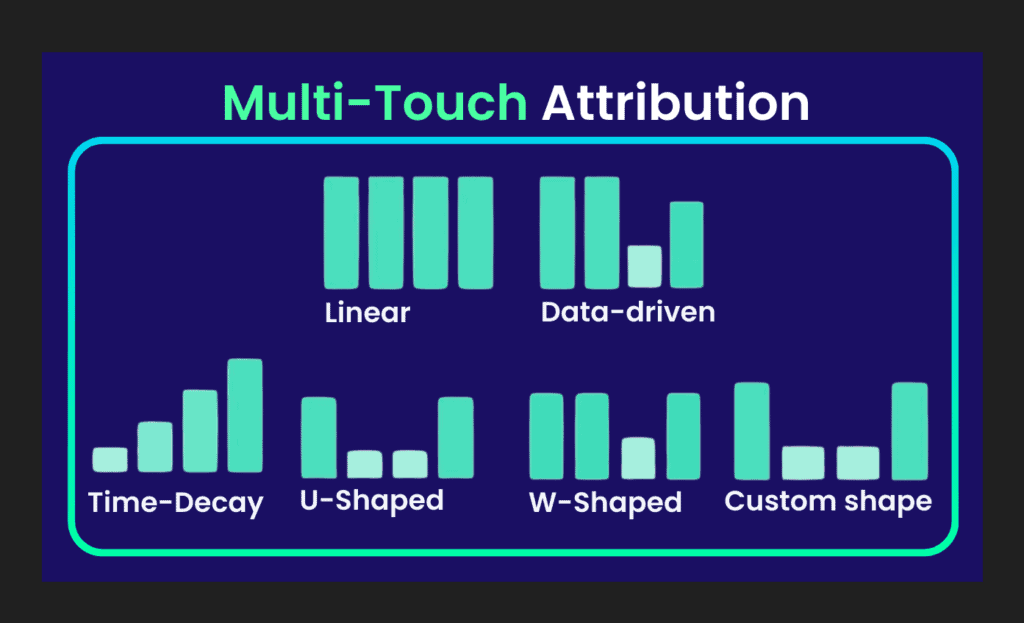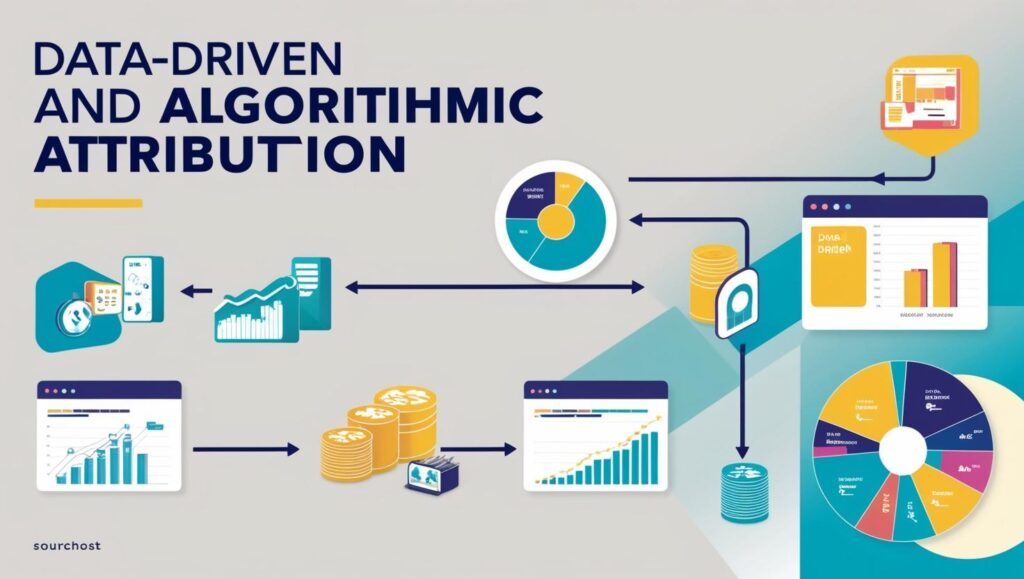Before diving into the details, this guide provides a comprehensive overview of digital marketing attribution models—from simple single‑touch frameworks like first‑ and last‑touch, through multi‑touch approaches such as linear, time‑decay, and position‑based, to advanced data‑driven and algorithmic methods using Markov chains and Shapley values. You’ll learn the strengths and limitations of each model, discover how to select the best fit for your sales cycle and analytics maturity, and explore practical tools and best practices for implementation. By the end, you’ll be equipped to optimize budget allocation, improve ROI, and align marketing efforts with business goals.
What Is Attribution Modeling?

Attribution modeling is a framework that determines how credit for conversions is assigned to different marketing touchpoints in a customer’s journey. At its core, it answers the question: “Which channel or campaign generated this user, lead, or sale?” . Traditional models like last‑click are simple but overlook the influence of earlier interactions, necessitating more nuanced frameworks to capture the full customer journey.
Single‑Touch Attribution Models: Pros and Cons

Single‑touch attribution models assign 100% of the conversion credit to one touchpoint—either the first or the last interaction. While easy to implement, they provide a limited view of a multi‑step decision process.
First‑Touch Attribution
First‑touch (or first‑click) gives all credit to the initial interaction, making it useful for understanding channels that drive awareness. It’s straightforward and highlights top‑of‑funnel drivers but ignores all subsequent nurturing activities.
Last‑Touch Attribution
Last‑touch (or last‑click) allocates all credit to the final interaction before conversion, offering clear visibility into which channel sealed the deal.
Pros:
-Simplicity and ease of understanding
-Immediate insights into high‑impact, lower‑funnel channels
Cons:
-Ignores earlier assisting channels that build awareness and consideration
-Biased toward last‑click channels (e.g., paid search, direct)
Multi‑Touch Attribution Models: Linear, Time Decay, and Position‑Based

Multi‑touch attribution distributes credit across several interactions, reflecting the collaborative nature of modern marketing channels.
Linear Attribution Model
The linear attribution model splits conversion credit equally among all touchpoints in the customer journey, offering a balanced view of each interaction’s role.
Advantages:
-Acknowledges every touchpoint’s contribution
-Simple to implement and understand
Disadvantages:
-Fails to differentiate between more and less influential interactions
-May dilute credit for high‑impact touchpoints (e.g., demo requests)
Time Decay Attribution Model
Time decay attribution assigns more credit to touchpoints closer in time to the conversion, based on the principle that recent interactions have greater influence.
How It Works:
-Touchpoints receive weights that decrease exponentially the further they are from the conversion event.
Benefits:
-Balances acknowledgment of all touchpoints with emphasis on late‑stage interactions.
-Ideal for businesses with longer, non‑linear customer journeys.
Limitations:
-Can undervalue early awareness‑building activities.
-Requires careful configuration of decay parameters (e.g., half‑life)
Position‑Based (U‑Shaped/W‑Shaped) Attribution
Position‑based models—often called U‑shaped—allocate the majority of credit (e.g., 40%) to the first and last touchpoints, with the remaining credit distributed equally among middle interactions. This approach highlights both awareness and conversion drivers while still acknowledging mid‑funnel efforts.
Data‑Driven and Algorithmic Attribution

Data‑driven attribution leverages statistical and machine‑learning techniques to assign credit based on observed contribution to conversions.
–Markov Chains: Use probabilistic modeling of conversion paths, analyzing transitions between touchpoints to estimate each channel’s impact. Models simulate both converting and non‑converting user journeys for calibration.
–Shapley Value Attribution: Originating from cooperative game theory, Shapley values fairly distribute conversion credit among channels by considering all possible touchpoint sequences and their marginal contributions. While highly accurate and equitable, Shapley models can be computationally intensive and data‑heavy.
How to Choose the Right Attribution Models for Your Business
Selecting an attribution model depends on factors like sales cycle length, analytics maturity, data availability, and budget. Consider:
–Sales Cycle Complexity: Use time decay or algorithmic models for longer, multi‑touch journeys.
–Data Volume: Data‑driven models require extensive, clean datasets.
–Analytics Resources: Probabilistic and Shapley models need technical expertise and computing power.
–Business Objectives: For quick, actionable insights, start with last‑click; for balanced awareness‑to‑conversion views, try position‑based; for precision, deploy data‑driven models.
Implementing Attribution Models: Tools and Best Practices
Tools:
–Google Analytics 4 (GA4): Offers first, last, linear, and data‑driven attribution; integrates seamlessly with Google Ads.
–Adobe Analytics: Provides rule‑based and AI‑driven models; suited for enterprise needs.
–Mixpanel: Tracks customer journeys and attributes traffic sources automatically.
–Adjust.com: Specializes in mobile app attribution with deterministic and probabilistic methods for clicks and impressions.
Best Practices:
1. Tag Governance: Establish clear policies, naming conventions, and regular audits to maintain data quality and compliance.
2. Lookback Windows: Align attribution windows (e.g., 7‑day click, 1‑day view) with customer behavior and campaign goals.
3. Data Layer Standardization: Ensure consistent data collection across platforms to feed multi‑touch and algorithmic models effectively.
4. Cross‑Channel Integration: Consolidate data from paid, organic, email, and offline channels for a holistic view.
5. Continuous Optimization: Regularly compare model outputs, run split‑tests, and refine parameters to reflect evolving customer behavior.
Frequently Asked Questions
1. Which attribution model should I start with?
Begin with last‑click for simplicity, then experiment with linear or time‑decay to understand multi‑touch impacts.
2. How do data‑driven attribution models work?
They use machine‑learning or probabilistic techniques (e.g., Markov chains, Shapley values) to analyze converting and non‑converting paths, assigning credit based on statistical contribution.
3. Can I use multiple models simultaneously?
Yes—split‑testing different models side‑by‑side helps compare performance, and many platforms allow model‑comparison dashboards for real‑time insights.
4. How does lookback window affect my attribution?
Shorter windows emphasize recent interactions, while longer windows capture early touchpoints; choose based on your product’s purchase cycle (e.g., B2B vs. B2C)
5. What tools support advanced attribution modeling?
Google Analytics 4, Adobe Analytics, Funnel.io, Statsig, Adjust.com, and specialized solutions like Usermaven or Ruler Analytics offer advanced multi‑touch and data‑driven capabilities
At Balistro, we specialize in helping businesses grow through effective digital marketing strategies. From Google Ads to Meta Ads, we deliver data-driven campaigns that maximize your ROI and drive real results. If you’re looking to boost your online presence, generate leads, or scale your e-commerce business, our expert team is here to help. Contact us today to learn more about how we can support your advertising needs!



